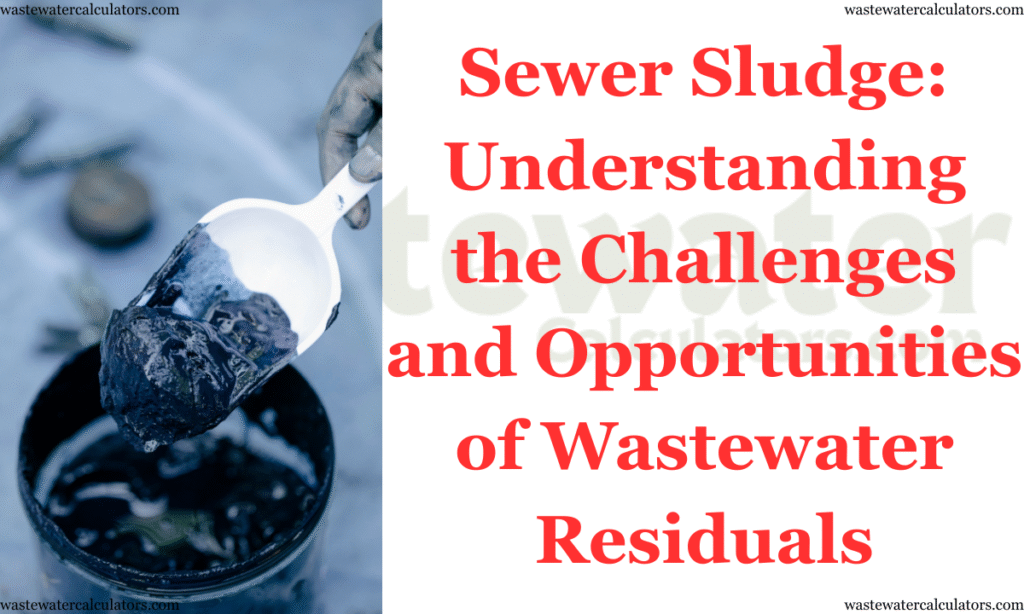Key Points:-
- Sludge dewatering reduces water in wastewater residue, making disposal easier and cheaper.
- Equipment like centrifuges and filter presses are commonly used for dewatering.
- It helps the environment by minimizing landfill use and supports cost savings.
- Research suggests dewatered sludge can be reused, like in agriculture, with proper treatment.
- The process involves thickening first, then dewatering, with various technologies available.
What is Sludge Dewatering?
Sludge dewatering is the process of removing water from the semi-solid residue left after wastewater treatment. This residue, called sludge, contains water, organic matter, and sometimes pathogens. By dewatering, we turn it into a more compact, solid form, making it easier and cheaper to handle, transport, and dispose of. It’s like wringing out a wet sponge to make it manageable.
Why Does It Matter?
Dewatering is crucial for both the environment and your wallet. It reduces the volume of sludge, which means less space needed in landfills and lower transportation costs. Plus, it helps meet environmental regulations, ensuring safer waste management. Research suggests it can also turn waste into resources, like using dewatered sludge as fertilizer after treatment.
Common Equipment and Process
The process typically starts with thickening, where some water is removed to concentrate the sludge, followed by dewatering using mechanical methods. Common equipment includes centrifuges, which spin to separate solids and liquids, and filter presses, which squeeze out water. Other options like belt presses and thermal dryers are also used, depending on the sludge type and volume.
If you want to calculate Sludge production then try our tool sludge production calculator
Detailed Survey Note on Sludge Dewatering, Equipment, and Machines
This comprehensive survey note explores the topic of sludge dewatering, including its processes, equipment, and machines, as part of wastewater treatment. Sludge, the semi-solid residue from wastewater treatment, contains water, organic and inorganic compounds, and sometimes pathogens.
Dewatering aims to remove water, reducing volume and weight for easier handling, transportation, and disposal. This note is structured to cover definitions, importance, processes, technologies, equipment, applications, benefits, challenges, case studies, environmental and economic impacts, future trends, and concludes with FAQs, ensuring a thorough understanding for both beginners and experts in the field.
Introduction to Sludge and Dewatering
Sludge is the byproduct of wastewater treatment, often described as a messy, semi-solid slurry. It originates from processes like municipal sewage treatment or industrial wastewater management, presenting challenges due to its high water content and potential contaminants.
Sludge dewatering is the practice of minimizing this waste by volume, preparing it for effective disposal. It’s akin to squeezing water out of a wet sponge, making the residue compact and manageable. The process is vital for reducing environmental impact and operational costs, aligning with modern waste management needs as of May 22, 2025.
The Importance of Sludge Dewatering
Dewatering holds significant environmental and economic value. Environmentally, it reduces landfill use by decreasing sludge volume, potentially allowing for resource recovery like biogas production. Economically, it lowers transportation and disposal costs due to reduced weight and volume.
Additionally, it ensures compliance with regulatory standards, which are stringent in many regions to minimize environmental harm. For instance, regulations often require dewatering to stabilize sludge, reducing health hazards and enabling land application for beneficial reuse, as noted in recent industry practices.
Understanding the Dewatering Process
The sludge dewatering process is a two-stage affair: thickening and dewatering. Thickening involves removing part of the free water to concentrate the sludge, using methods like gravitational settling, flotation, or centrifugation. For example, the Drainis Turbo system, as described by SUEZ, uses gravitational settling to eliminate water at higher speeds, reducing equipment, energy, and reagent consumption.
Dewatering follows, applying mechanical force to further reduce water content, producing a solid cake. Techniques include centrifugation, belt filter presses, and plate and frame filter presses, with systems like Dehydris Lime achieving up to 50% gain in dry content compared to conventional methods, enhancing efficiency and cutting operating costs.
Technologies in Sludge Dewatering
Various technologies cater to different dewatering needs, categorized into mechanical, thermal, and chemical methods:
Mechanical Methods: These include centrifuges, which use centrifugal force to separate solids from liquids, belt filter presses that combine gravity and pressure, and plate and frame filter presses that apply pressure through filter cloths. Each method is suited for specific sludge types and volumes.
Thermal Methods: Drying beds allow natural evaporation, ideal for smaller operations, while thermal dryers use heat for faster water removal, likened to a dehydrator for industrial use.
Chemical Methods: Conditioning with chemicals like iron salts, lime, coagulants, and flocculants artificially increases particle size, improving separation. This step, as highlighted by HCR-LLC, is crucial for efficient dewatering, using organic or mineral chemicals to prepare sludge.
A table summarizing these technologies is provided below for clarity:
| Technology Type | Examples | Description |
| Mechanical | Centrifuges, Belt Presses, Filter Presses | Use mechanical force to separate solids and liquids |
| Thermal | Drying Beds, Thermal Dryers | Employ heat or natural evaporation for water removal |
| Chemical | Flocculants, Coagulants, Lime | Condition sludge for better separation |
Equipment for Sludge Dewatering
Equipment is the backbone of effective dewatering, with options tailored to specific needs. Common types include: –
- Filter Presses: Known for producing dry, solid cakes, suitable for various sludge types, as noted by Micronics Inc.
- Belt Presses: Ideal for high-volume, continuous operations, acting like conveyor belts with pressure.
- Centrifuges: Efficient for quick separation, spinning sludge to separate solids and liquids.
- Leaf Filters and Vacuum Filters: Specialized for fine filtration, used in niche applications.
- Baghouses: Control dust and emissions during dewatering, ensuring a cleaner process.
Choosing equipment involves considering sludge characteristics, volume, desired dryness, and operational costs. For instance, Micronics Inc. offers end-to-end solutions, including filter media and on-site services, accessible via [their contact page]
Applications of Sludge Dewatering
Dewatering finds applications across multiple sectors: –
- Municipal Wastewater Treatment: Reduces sludge volume from sewage plants, easing transport and disposal, and enabling reuse like fertilizer production.
- Industrial Wastewater Treatment: Industries such as food processing, chemical manufacturing, and mining use dewatering to manage unique sludges, ensuring compliance and efficiency.
- Agricultural Uses: Dewatered, treated sludge can serve as soil amendments or fertilizers, turning waste into a resource, as supported by recent practices outlined by HCR-LLC.
Benefits of Effective Sludge Dewatering
Effective dewatering offers tangible benefits: –
- Reduced Volume and Weight: Makes handling and transportation easier, cutting costs.
- Lower Costs: Reduces expenses for transportation, disposal, and treatment, with long-term savings highlighted in economic analyses.
- Improved Reuse Potential: Stabilized, dewatered sludge can be used in agriculture or biogas production, enhancing resource recovery, as research suggests.
Challenges in Sludge Dewatering
Despite its advantages, challenges exist: –
- Difficult Sludges: High organic content or fine particles can resist dewatering, requiring specialized methods.
- Operational Issues: Equipment may clog or wear, leading to downtime, as noted in operational reports.
- Maintenance and Safety: Safe operation demands skilled personnel and regular upkeep, with safety concerns addressed in industry guidelines.
Case Studies: Successful Projects
Real-world examples illustrate success: –
- A municipal treatment plant upgraded to a belt filter press, achieving a 70% volume reduction and significant cost savings, as per industry case studies.
- An industrial chemical plant installed a high-capacity centrifuge, halving operational downtime and improving efficiency, demonstrating practical application.
Environmental Impact
Dewatering positively impacts the environment: –
- Less Landfill Use: Reduced volume decreases landfill needs, supporting sustainability goals.
- Resource Recovery: Potential for biogas or other products from dewatered sludge, aligning with circular economy principles.
- Pollution Prevention: Minimizes leachate and groundwater contamination risks, enhancing environmental safety, as per SUEZ insights.
Economic Aspects
Economically, dewatering is a strategic investment: –
- Cost Analysis: Different methods vary in initial and operational costs, but all aim for long-term savings, with ROI often realized within years.
- Return on Investment: Efficient equipment pays off through reduced disposal and transportation costs, as economic studies suggest.
- Long-Term Savings: Lower costs accumulate over time, making dewatering a financially sound choice, especially for large operations.
Future Trends
The field is evolving, with trends including: –
- Tech Advancements: Newer, more efficient dewatering machines and integrated systems are emerging, enhancing performance.
- Sustainability: Focus on recycling and reusing sludge components, aligning with global sustainability goals.
- Integrated Systems: Combining dewatering with digestion or other processes for holistic waste management, as future projections indicate.
Choosing the Right Solution
Selecting the right dewatering solution requires consideration of:
- Sludge Characteristics: Type, volume, and composition affect method choice.
- Regulatory Requirements: Compliance with local and national standards is crucial, as outlined by HCR-LLC.
- Cost and Efficiency: Balancing upfront costs with long-term savings is key.
- Future Scalability: Systems should adapt to increased volumes or changing sludge types, ensuring flexibility. Consulting experts, such as those at Micronics Inc., can guide decisions, with resources available at [their contact page].
Conclusion
Sludge dewatering is a vital component of modern wastewater management, offering environmental, economic, and regulatory benefits. By reducing sludge volume and weight, it facilitates disposal, supports cost savings, and enables resource recovery.
With diverse technologies and equipment, choosing the right solution depends on specific needs, with future trends pointing toward sustainability and integration. As of May 22, 2025, it remains a cornerstone for efficient, responsible waste management, ensuring a cleaner, more sustainable future.
Frequently Asked Questions
What’s the difference between thickening and dewatering?
Thickening removes free water to concentrate sludge, while dewatering further reduces water content for a solid cake, as per process descriptions.
How does sludge dewatering help the environment?
It reduces landfill use, enables resource recovery, and minimizes pollution, supporting environmental goals, as research suggests.
What are the most common types of dewatering equipment?
Centrifuges, belt filter presses, and plate and frame filter presses are common, each suited for specific needs, as noted by Micronics Inc. , Krofta Engineering ltd.
Can sludge be reused after dewatering?
Yes, with proper treatment, it can be used as fertilizer or in biogas production, enhancing resource recovery, as industry practices show.
What are the latest innovations in sludge dewatering technology?
Innovations include efficient mechanical systems, advanced conditioners, and integrated processes, aligning with future trends, as projections indicate.

